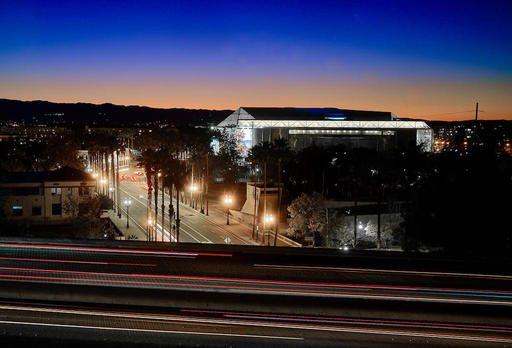When I first get to a hotel room, I pull back the curtains, survey the scene, and decide if there are any photo opportunities. I love the unique perspective that tall buildings provide.
Some of the best possibilities are twilight shots. These usually involve long exposures, especially if I want to capture some movement from the city below.
 San Jose at Twilight - Fujifilm X100V, ISO 160, Aperture Priority at f/4, Exposure 2 seconds. Photo by Derrick Story.
San Jose at Twilight - Fujifilm X100V, ISO 160, Aperture Priority at f/4, Exposure 2 seconds. Photo by Derrick Story.
My set up is simple. In this case I used a Fujifilm X100V with a lens hood. I position the camera on a tripod with the edge of the hood flush against the window (this prevents any room reflections from polluting the image). A cable release or self-timer trips the shutter.
Since I have the camera stabilized, I'm not that concerned with the exposure setting. But I do like to keep the ISO as low as possible and maybe stop down the aperture a bit. The low ISO helps control noise, and using f/4 instead of f/2 gives me a bit more sharpness.
A lot of times we think "wide open" for night photography. That makes sense on one level, to let as much light as possible through the lens. But if the camera is secured, it's OK to go to f/2.8 or f/4. We don't have to worry about the longer exposure.
The settings for my twilight hotel room shots usually are: Aperture Priority Mode at f/2.8-f/4, ISO setting to 160 (take it off Auto ISO), and self-timer on (if I forgot the cable release).
These subtle adjustments can make a big difference in the final picture.
PS: One "cool" bonus tip is to set the while balance to Tungsten for a lovely bluish effect that helps offset the overly warm tones of the city lights.
Product Links and Comments
There are product links in this article that contain affiliate tags. In some cases, depending on the product, The Digital Story may receive compensation if you purchase a product via one of those links. There is no additional cost to you.
You can share your thoughts at the TDS Facebook page, where I'll post this story for discussion.











